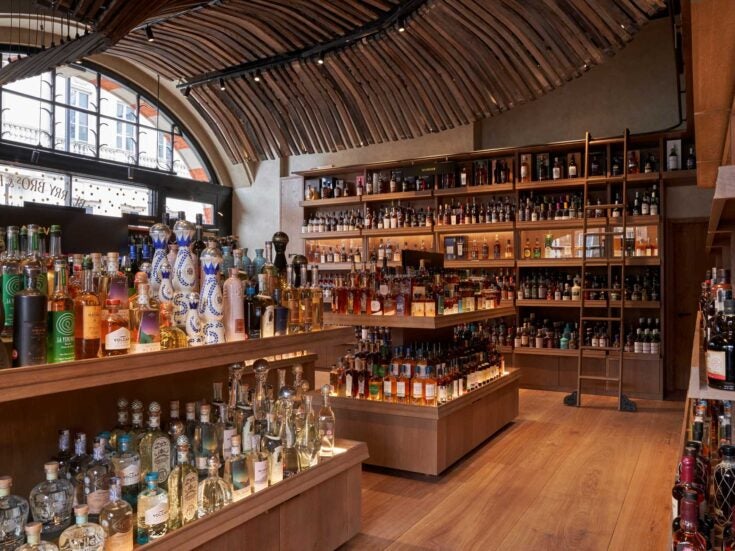
William Sitwell on the myriad reasons why some restaurants not only endure but also flourish — and why so many more of them simply don’t
THE DAYS, AND more particularly the nights, of a London foodie are peppered with restaurant launches. We happy gang of liggers flounce from one new joint to the next, wolfing down free plates of food and glugging fizzy stuff. We are the recipients of the ambitions of chefs and restaurateurs attempting to live out their dreams.
Ask any chef what he or she dreams about and it is usually two-fold. They want to open their own place, and they’d like that place to have Michelin stars shining over it. The former is tough, the latter tougher. Yet the constant ping of emails requesting your presence at the opening of the next big thing is unrelenting. No matter how bad a recession, how little investment or lending there might be, the openings keep on coming.
Indeed, the restaurant scene seems to buck the trend of economic dip. In the past year the capital has seen some 140 openings — around twenty more than the previous year. It confirms my suspicion that London continues to be the restaurant capital of the world, and it is into this manic scene that every ambitious would-be restaurateur wishes to fling their hat.
But the downsides are clear, too. For every two openings there is around one closure. Indeed, the last twelve months saw 72 restaurants shutting, up from 64 in the previous year. And even with the scattered remains of closed restaurants, of these broken dreams, with recriminations left, right and centre, people keep opening them.
Restaurantitis afflicts even the most brilliant of individuals. You manage to open one place, and then you find you can’t but help pushing forward with plans to start the next, regardless of whether the first is actually working. The less scrupulous restaurateur — of which there are plenty — will open regardless of whether (indeed sometimes because) the first isn’t working. What better ruse than to phoenix the first place, write off the debt and plough your energies and promises of continued business for your unpaid suppliers into place number two?

Meanwhile, we the diners nip from place to place sating our appetites for new things to pop into our mouths. Yet there is nothing like the love we have for old friends. And London has plenty examples of places that have stood the test of time, although no one can ever explain definitively what gives a restaurant longevity.
FOR EXAMPLE, THERE’S Julie’s, by Holland Park. It opened in 1969 and still does a roaring trade. Owner Johnny Ekperigin, who once cheffed there, puts it down to ‘hard work, great staff, loyal customers and consistency. The secret is not to change very much what you do very well,’ he says, adding that the place has seen just five head chefs in 40 years and that he is ‘always tweaking but never changing’.
Chefs, of course, are creative types and get frustrated at turning out the same dishes month in, month out. As Maureen Mills, whose PR company Network London boasts a string of high-profile restaurants as clients, says: ‘Beware of the chef who comes back from Thailand with a fabulous array of new and exciting ideas for their menu. Anything that strays from their traditional menu or their signature food is never a good idea.’
This is perhaps why Le Gavroche, which opened in 1967, keeps going strong. Its combination of faultless, timeless service, of always remaining true to its core as a special-occasion restaurant (but one with a staggeringly good value lunch menu), might be a clue here. Likewise La Poule au Pot in Belgravia (founded 1962), which has barely changed — the food is rustic, deeply delicious French; the service amusingly surly. It never disappoints your expectation. Neither does Elena’s l’Etoile in Soho, likewise Le Caprice and the Ivy.
‘We have maintained relevance by adapting to the times,’ says Fernando Peire, restaurant manager of the Ivy. ‘We have refined our menu to keep up with current tastes but not fads. So our fishcakes are lighter, the duck salad is less cloying. We do not want to end up as a food museum or a quirky throwback to the Eighties or Nineties.’

Peire also understands the importance of developing your clientele. He has enticed a younger crowd to mix with the Establishment and theatrical types. ‘The Ivy maitre d’s are in their twenties,’ he explains. ‘They know who’s who in the creative and performing worlds. They know how to look after them and make them feel they are in the right place.’
THIS BEGS THE question of location. There was sadness when gifted chef Oliver Rowe shut Konstam at the Prince Albert in August. His innovative menu promised 80 per cent of ingredients sourced from within the M25, but he blamed ‘this unsettled economic climate’ and ‘a challenging location’ for the closure.
As one restaurant observer puts it: ‘It doesn’t matter how brilliant your menu, décor or service. If you locate your place in a grotty street off a grotty part of Kings Cross you’ll suffer.’
Another recent high-profile closure was the Eastside Inn. Located in Farringdon, it was run by Bjorn van der Horst. He is a gifted chef, once hired and championed by Gordon Ramsay and with a penchant for challenging menus, but the situation has left him devastated. ‘It was a mélange of too much in a very difficult time,’ he says. His mood is so different from when he opened the place just two years ago, in spite of the downturn. ‘Let’s just pursue our dream,’ he had ventured. ‘Let’s not allow circumstances to get in the way of what we want.’
His dreams were shattered, along with those of the owners of Papillon, Soren Jessen’s French restaurant in Chelsea, Gordon Ramsay’s pub the Devonshire in Chiswick, and St Alban on Regent Street. St Alban was run by Christopher Corbin and Jeremy King of colossally successful Wolseley fame, proving that it doesn’t matter who you are or what and who you know, sometimes some restaurants just don’t work.
A successful restaurateur has to understand business, food, décor, atmosphere, social trends, diet fads, critics, social media, staff management, to mention but a few key traits. It’s a wonder, then, that restaurants don’t close more often.
Illustration by Richard Beacham








